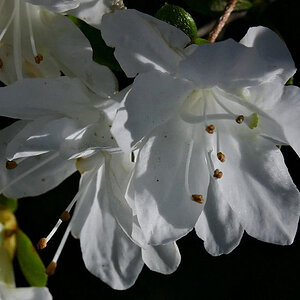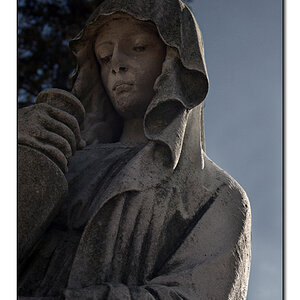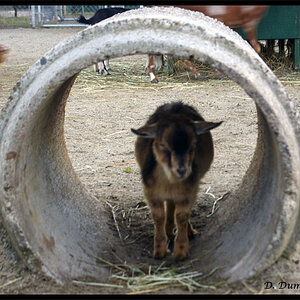Unimaxium
TPF Noob!
- Joined
- Nov 13, 2004
- Messages
- 2,689
- Reaction score
- 22
- Website
- www.flickr.com
- Can others edit my Photos
- Photos OK to edit
I don't see very many threads about lenses apart from the numerous "what lens is right for me?" or "is this a good lens?" threads. So I'm pretty lost when it comes to knowing much about these things. I've searched around, and haven't found a whole lot that has helped eliminate all the questions I have. I have managed to learn the word bokeh (which I've been dying to throw into a conversation), and a couple more things that have helped me understand lenses a bit, but not much. It would be great if this could turn into something like that "basic photography concepts and vocabulary for newbies" sticky thread, except specifically for lenses. So please, anyone who knows something they can share on this topic, help those of us who are confused here to understand better, by imparting your wisdom unto us  .
.
I also have a few assorted specific questions: (some may be newb-ish, although I don't like to say that as it makes it sound like I think low of myself for being new to photography)
1) What exactly defines a "prime" lens?
2) I've heard "L" (L-series?) lenses referred to a bit. What exactly are those? Just a brand name for a company's line of prime lenses? Or something?
3) How can I drop "bokeh" into a conversation without sounding dorky?
4) Exactly how great, on a scale of e (2.718) to pi (3.141), is the difference between a bad lens and a good lens? Well, Ok, maybe I don't need it on a scale , but can someone help me get a sense of how important/unimportant it is to have a good lens on my camera? I know I'm asking this awfully simplistically, but I wasn't sure how else to ask it.
, but can someone help me get a sense of how important/unimportant it is to have a good lens on my camera? I know I'm asking this awfully simplistically, but I wasn't sure how else to ask it.
5) When is it most beneficial to have a well-made lens (what kind of photography)? When might it be least necessary? Or is it maybe equally beneficial for any situation?
6) Similar to #5, what kinds of lenses are good for what kinds of photography? This is another general question I know, but I'm not really expecting a completely comprehensive list of every lense with every branch of photography.
7) Why exactly do lenses in digital cameras have "35mm equivalent" focal lengths? I know that the size of the CCD/CMOS chip is different from a 35mm frame, but wouldn't this simply produce a crop rather than a difference in effective focal length? Is it because the sensor is positioned closer to / farther from the lens than the film normally is?
Thanks to anyone who can help to clarify anything above, or any questions that others might have.
 .
.I also have a few assorted specific questions: (some may be newb-ish, although I don't like to say that as it makes it sound like I think low of myself for being new to photography)
1) What exactly defines a "prime" lens?
2) I've heard "L" (L-series?) lenses referred to a bit. What exactly are those? Just a brand name for a company's line of prime lenses? Or something?
3) How can I drop "bokeh" into a conversation without sounding dorky?
4) Exactly how great, on a scale of e (2.718) to pi (3.141), is the difference between a bad lens and a good lens? Well, Ok, maybe I don't need it on a scale
 , but can someone help me get a sense of how important/unimportant it is to have a good lens on my camera? I know I'm asking this awfully simplistically, but I wasn't sure how else to ask it.
, but can someone help me get a sense of how important/unimportant it is to have a good lens on my camera? I know I'm asking this awfully simplistically, but I wasn't sure how else to ask it.5) When is it most beneficial to have a well-made lens (what kind of photography)? When might it be least necessary? Or is it maybe equally beneficial for any situation?
6) Similar to #5, what kinds of lenses are good for what kinds of photography? This is another general question I know, but I'm not really expecting a completely comprehensive list of every lense with every branch of photography.
7) Why exactly do lenses in digital cameras have "35mm equivalent" focal lengths? I know that the size of the CCD/CMOS chip is different from a 35mm frame, but wouldn't this simply produce a crop rather than a difference in effective focal length? Is it because the sensor is positioned closer to / farther from the lens than the film normally is?
Thanks to anyone who can help to clarify anything above, or any questions that others might have.



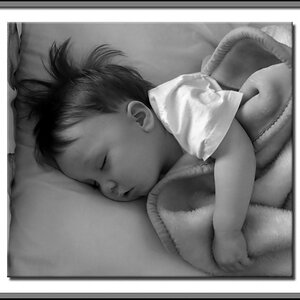
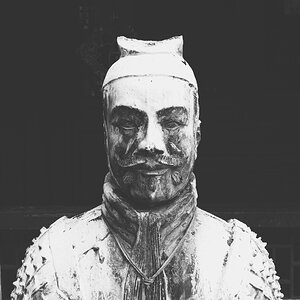


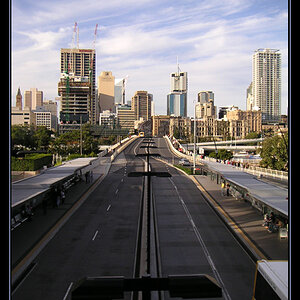
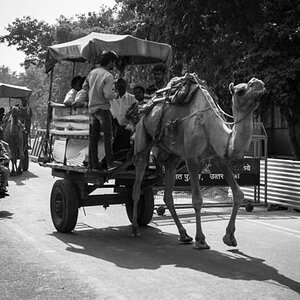
![[No title]](/data/xfmg/thumbnail/33/33421-38d09827e584b8381c5e3a468cdf0159.jpg?1619735961)


